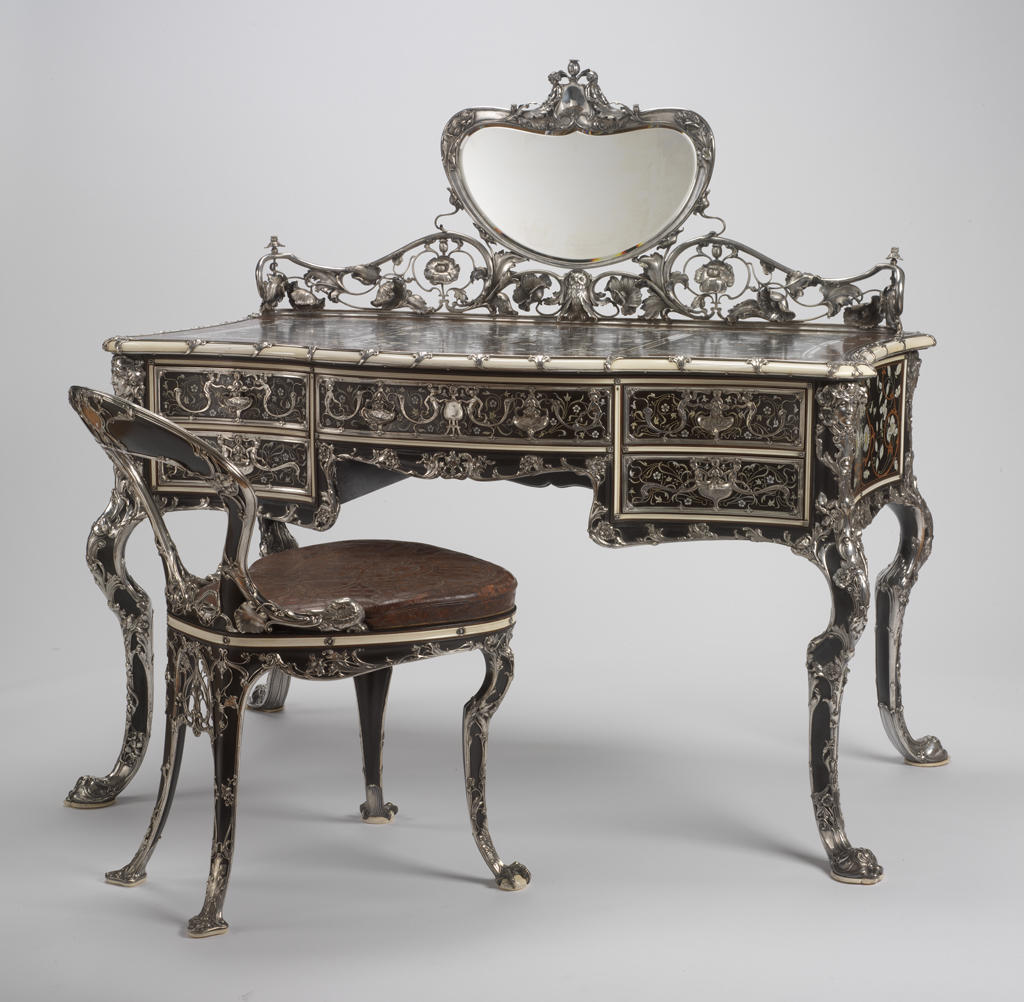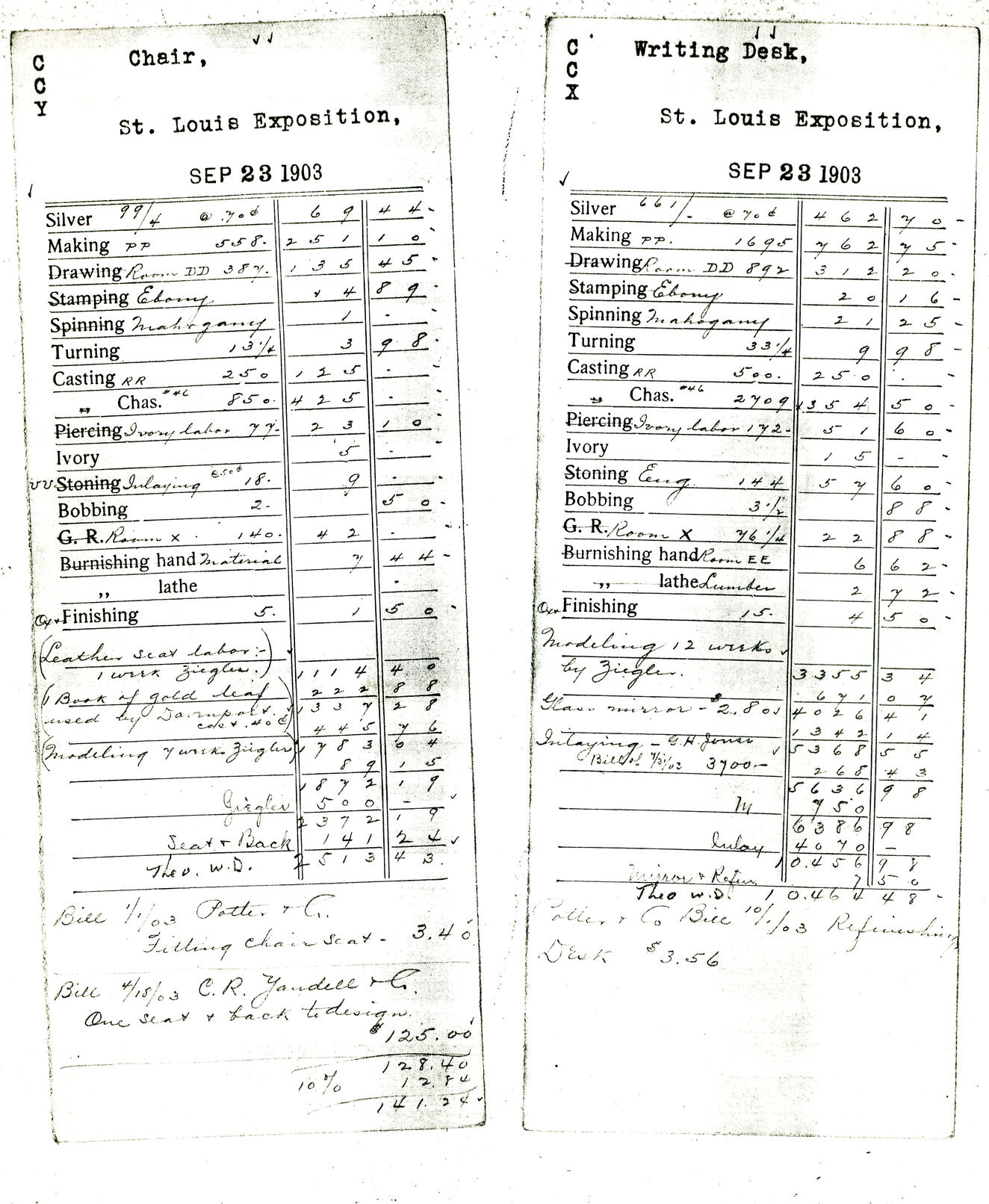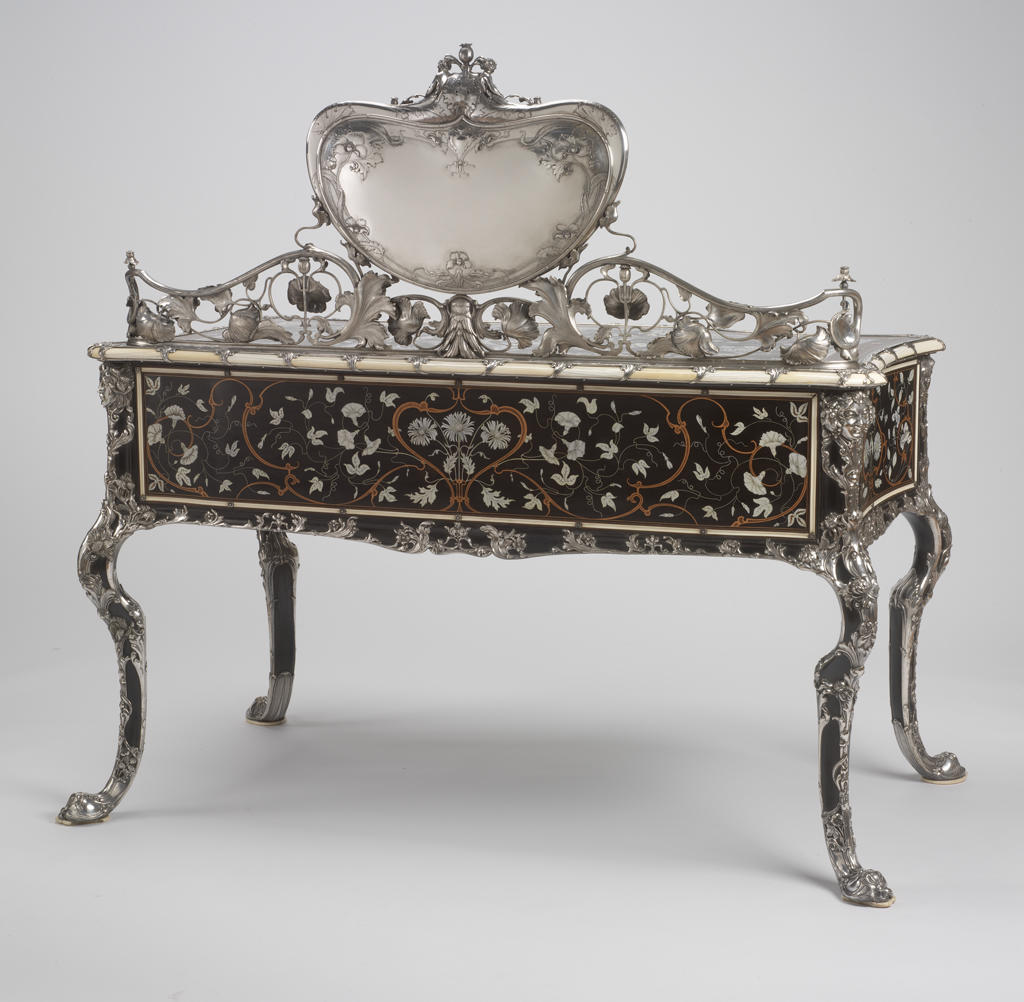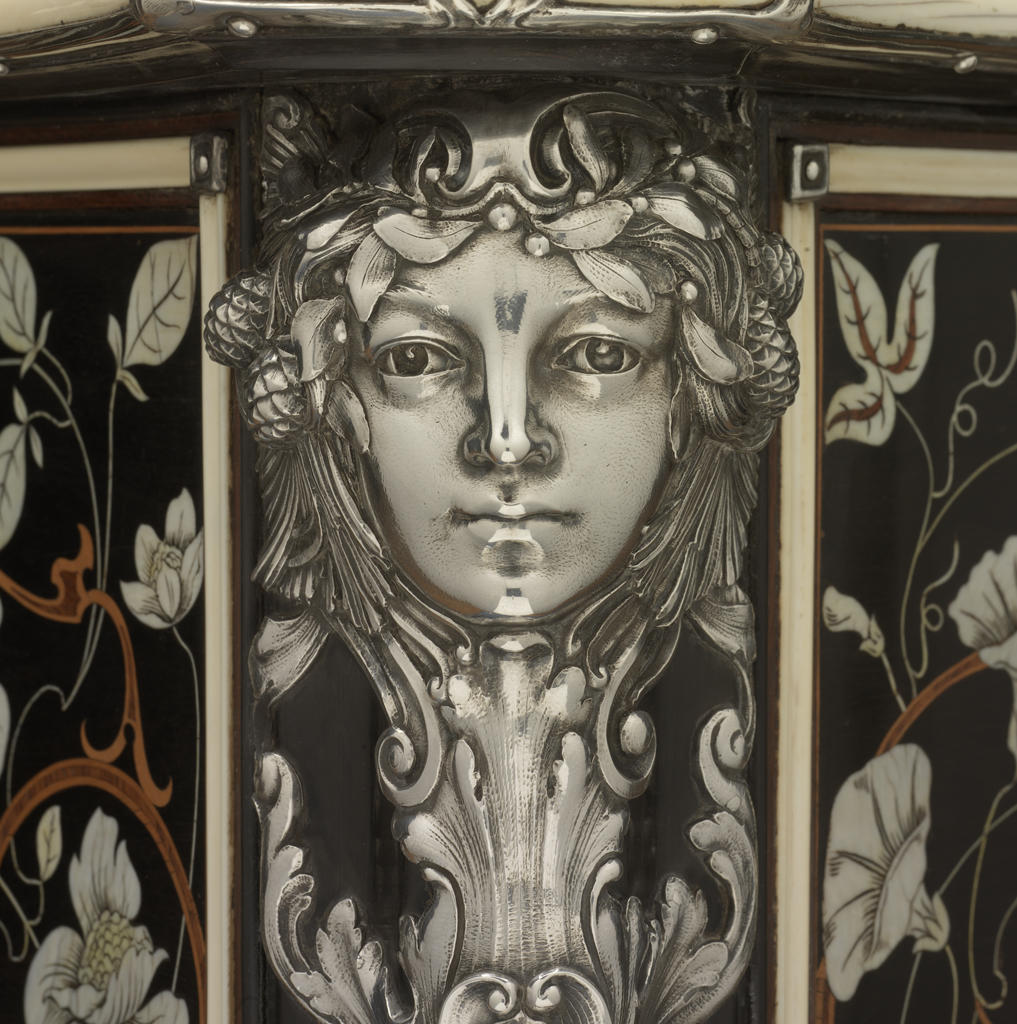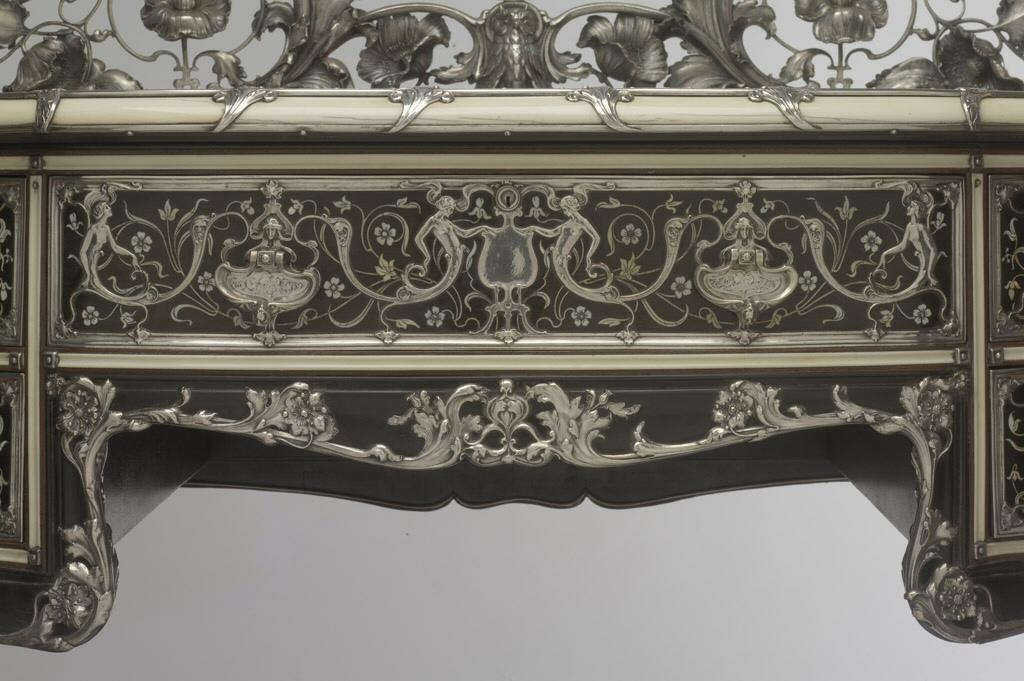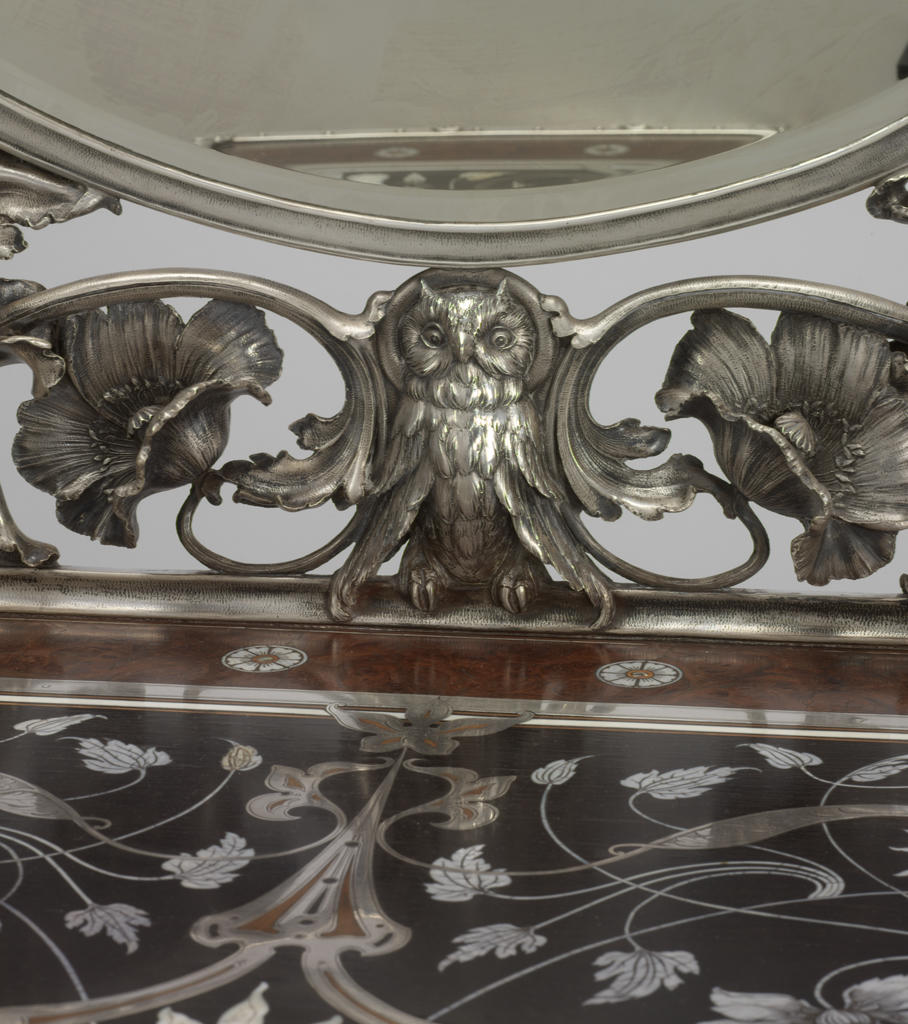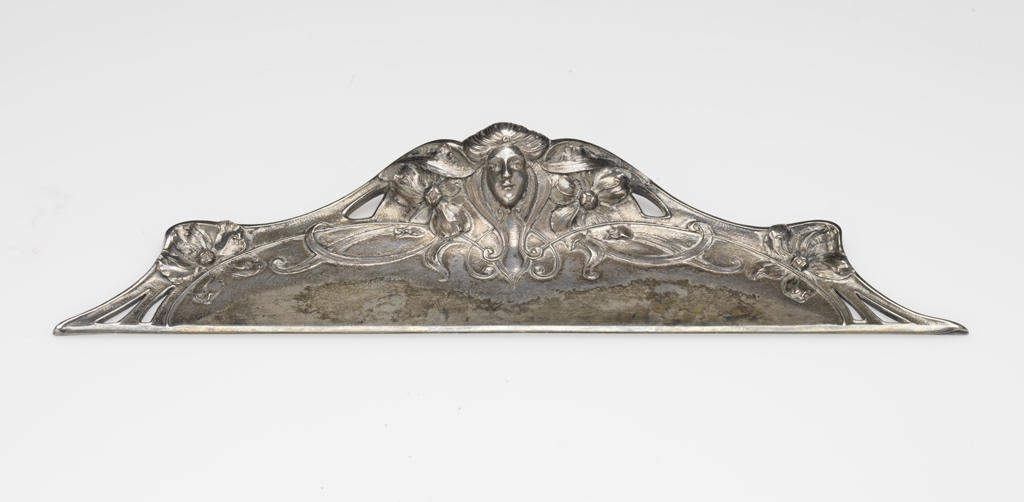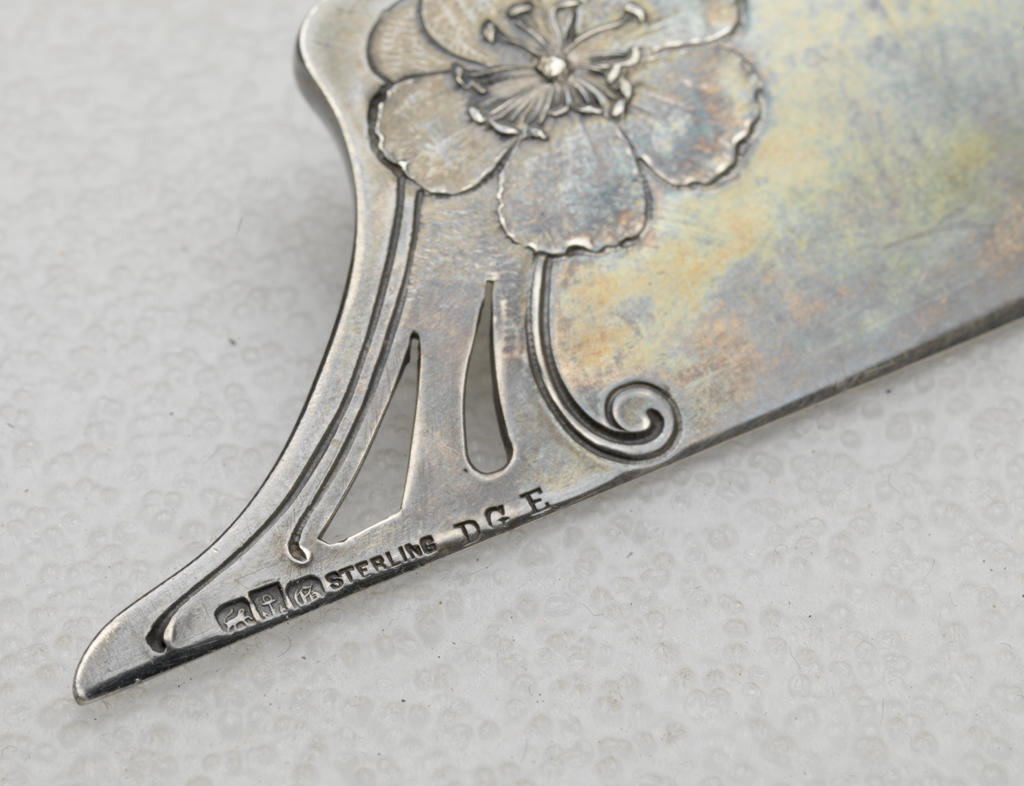Commanding attention now as it did at its debut at the 1904 St. Louis World’s Fair, this writing desk and chair were conceived by the Gorham Manufacturing Company as showstoppers amidst a sea of stunning objects. Their magnificent design and superior workmanship brought Gorham the Grand Prize in silversmithing at the fair.
Gorham was established in Providence, Rhode Island, in 1831 by Jabez Gorham (1792–1869), a fifth-generation New Englander. His son, John, joined the business in 1841, bringing mechanization and modernization to the company. Recalling the British hallmarking system initiated in the 15th century, the maker’s mark of the Gorham Manufacturing Company features a lion passant and an Old English script G. These adaptations of European symbols stand in secondary position as they flank an anchor, taken from the Rhode Island state flag.
Although various Gorham employees and outside specialists contributed more than 10,000 hours of labor to create the desk and chair, William C. Codman is credited with its design, and his signature is carved in one of the inside drawers. Born on Christmas Day, William Christmas Codman had been hired as Gorham’s chief designer in 1891, a year after the company opened its new plant on six acres of land on the edge of Providence. What Codman imagined in two dimensions was translated into three dimensions by the cadre of artists who applied multiple stages of silversmithing to the desk and chair, built from exotic woods and painstakingly inlaid with ivory, silver, and mother-of-pearl.
The number of hours accrued and the quantity and cost of each material was documented on costing slips Gorham maintained for their creations. Gorham’s slips for the chair and the desk indicate that approximately 50 pounds of silver was used.
The table and chair deftly meld contemporary Art Nouveau designs of the era with historical European styles to create a truly American masterpiece. In a nod to the Louisiana Purchase Exposition theme, the writing table recalls 18th-century Rococo French furniture with its elegant curves, intricate marquetry, and precious metal mounts. The table is made of ebony banded around the top with beautifully burled thuya wood and a molding of ivory. Inlays of silver, ivory, exotic woods, and mother-of-pearl, comprising a dizzying array of complex Hispano-Moresque arabesques, cover the top, sides, and back.
Symbolism cast in silver abounds in the ornamentation of the writing table and chair. The writing table legs rest on small pads of ivory that echo the spoon-shaped feet and are embellished with exquisite Renaissance Revival female masks, each representing one of the four seasons: winter is surrounded by pine cones, spring by lilies, summer by wild roses, and autumn by grapes and chrysanthemums. The silver gallery atop the writing table is formed of intertwined poppies and the mirror is decorated with morning glories, referencing night and day. An owl presides below the mirror, possibly to inspire the sitter to thoughtful writing.
The drawer fronts feature sinuous Art Nouveau chased floral and figural motifs; female bodies curve around the handles and keyholes.
The ebony chair is encased with Art Nouveau silver mounts that crisscross between the back chair legs, creating a lacy web of silver. Not to be overlooked are the naturalistic cast swan heads marking the terminus of the chair back at the seat and the clawed bird feet clutching oval balls of ivory. A striking composition of Art Nouveau curves against a latticework ground surround the floral spray on the chair seat and back, rendered in hand-wrought, carved, and embossed leather.
The writing table and chair were shown again at the 1915 Panama-Pacific International Exposition in San Francisco, with descriptions of the pieces detailed in an illustrated brochure. Also shown is the Art Nouveau–style 10-piece desk that accompanied the table and chair; today, the check cutter from the desk set is in the RISD Museum collections.
After the exposition closed, the writing table and chair were purchased by American capitalist and philanthropist August Hecksher for his daughter, Antoinette, who married Oliver Sylvain Baliol Brett, 3rd Viscount Esher. It is said that the pieces were in Viscountess Esher’s drawing room for years. At a 1953 auction at Christie’s in London, they were purchased then given to the Rhode Island School of Design Museum by Mr. and Mrs. Frederick B. Thurber, descendants of John Gorham’s partner and cousin, Gorham Thurber.
Mr. Thurber wrote in Memoirs of an Ancient Mariner, “I felt that it would be most appropriate if these historic and beautiful pieces of furniture, so magnificently typifying the silversmith’s art and the designer’s genius, could after half a century come home to Providence… . [W]hen they arrived ‘home’ I presented them to the School of Design Museum where they are on display.” The table and chair remain on display today, part of a collection of more than 2,000 works by the Gorham Manufacturing Company at the RISD Museum, the largest repository of Gorham silver in the world.
Elizabeth A. Williams
Curator of Decorative Arts and Design
